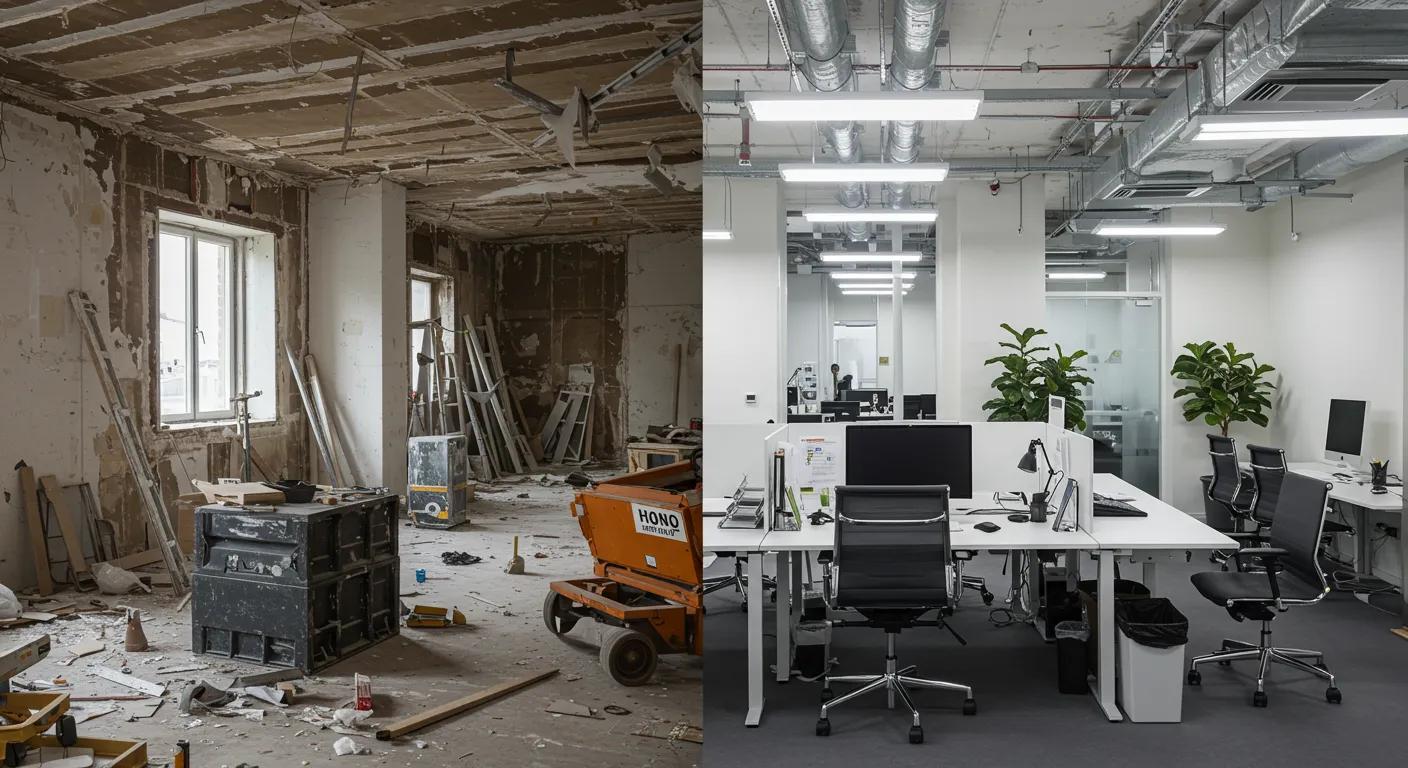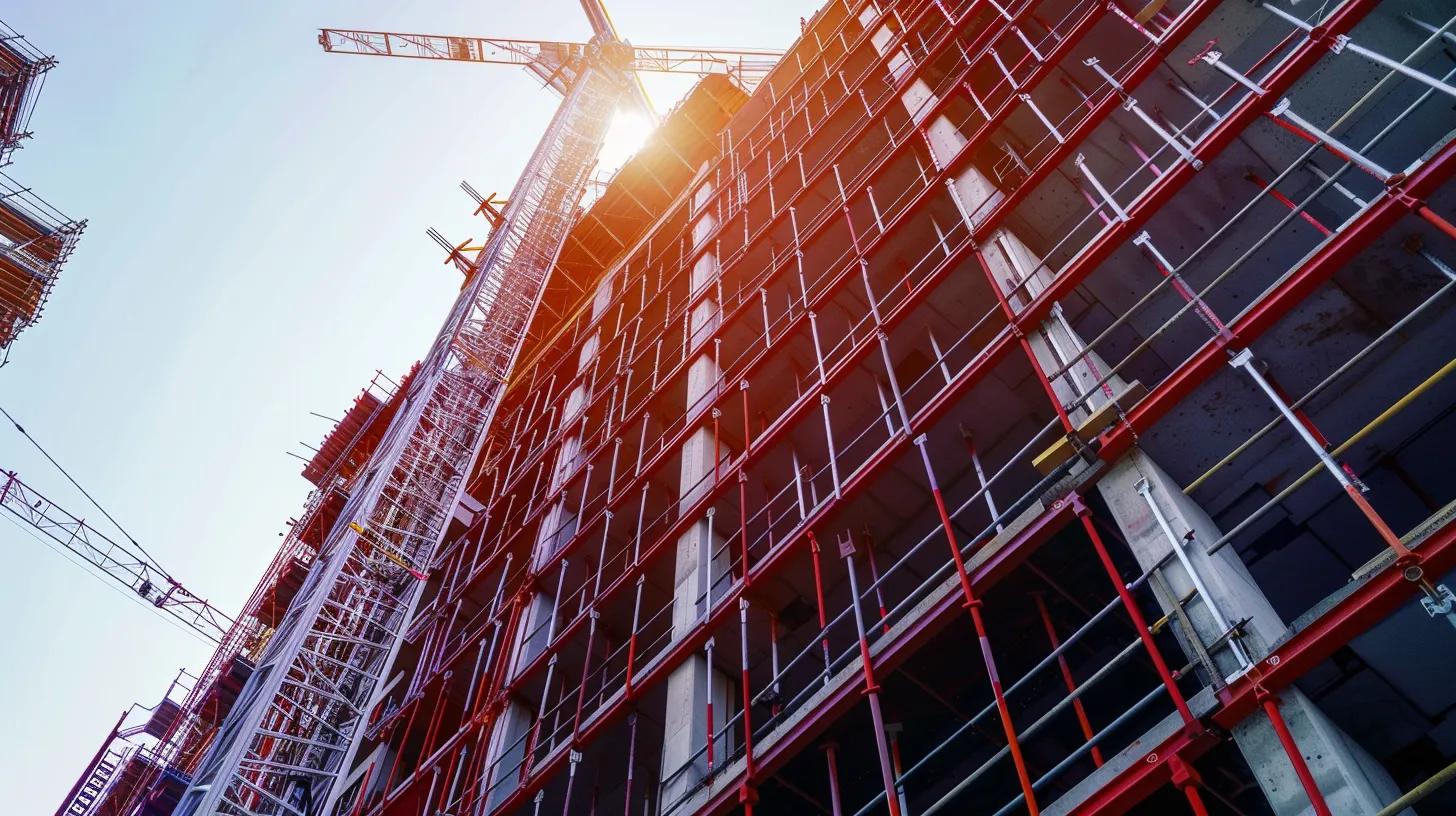
Assessing Renovation Costs Against New Build Expenses
Renovating your home or starting a new build are two distinct paths with different cost implications. Homeowners and real estate investors must balance renovation expenses against new construction budgets to maximize return on investment while meeting design and sustainability goals. This article breaks down material, labor, regulatory, and financing factors that affect each option and offers guidance on managing hidden expenses.
Key Takeaways
Renovations and new builds differ in material, labor, and regulatory costs.
A clear cost breakdown requires understanding hidden expenses and project-specific variables.
Land acquisition, design fees, and long-term financing influence new build budgets.
Sustainable practices and contractor selection can optimize overall expenses.
ROI calculations vary between renovation and new build projects based on scope and location.
What Are the Key Differences Between Renovation and New Build Costs?

Renovations update or expand existing structures and can incur unpredictable costs from issues like water damage or structural deficiencies. New builds allow for a controlled budgeting process with pre-estimated material and labor costs. Renovations may require matching older materials, increasing costs, while new builds often use modern, energy-efficient materials. Additionally, regulatory fees and permitting are usually higher and more complex during renovations.
How Do Material Costs Vary Between Renovations and New Builds?
Renovation material costs may rise unexpectedly due to specialized or retrofitting requirements, while new builds benefit from bulk purchasing and standardized modern materials, which can lower expenses.
What Are the Typical Labor Cost Differences?
Renovation projects often need skilled contractors to work around existing structures and resolve unforeseen issues, resulting in higher labor expenses. New builds benefit from efficient scheduling and fewer disruptions, reducing labor costs.
How Do Permitting and Regulatory Fees Impact Each Option?
Renovation permits can be more expensive and time-consuming, particularly if older structures need to meet updated codes. New builds typically have more predictable permitting fees and inspections, streamlining the process.
How Can You Break Down Renovation Costs Effectively?

Breaking down renovation costs requires a detailed, itemized analysis from demolition to final finishes. Homeowners should assess structural conditions, estimate repair costs, and set aside funds to cover unexpected issues such as water damage or pest problems.
What Are the Common Renovation Cost Components?
Key components include material purchases, labor, permit fees, design and architect fees, and contingency funds (usually 10–20% of the budget). Attention to detail can help identify potential savings without compromising quality.
How Do Hidden and Unexpected Costs Affect Renovation Budgets?
Issues like outdated wiring, mold, or structural weaknesses can quickly escalate costs. Many projects see hidden issues add as much as 20% to the initial estimate, stressing the need for a robust contingency fund.
Which Renovation Projects Have the Highest Cost Per Square Foot?
Kitchen and bathroom remodels often incur the highest costs due to specialized labor and high-quality materials. Structural changes, such as removing walls or updating systems, can also add significant expenses.
What Are the Main Cost Factors in New Build Projects?

New builds generally have higher upfront costs on a per-square-foot basis but benefit from modern design and efficiency. Important factors include land acquisition, architectural/design fees, construction materials, labor, and financing. New builds also allow integration of sustainable and energy-efficient technologies that may lower long-term costs.
How Do Land Acquisition and Design Fees Influence New Build Expenses?
Land costs vary dramatically by location, with urban areas often being much more expensive than rural ones. Design fees reflect the architect’s vision and may include advanced, energy-efficient systems that increase initial costs but yield long-term savings.
What Construction Methods Affect New Build Costs?
Methods such as modular construction, prefabrication, and green building techniques can improve efficiency by reducing waste and speeding up timelines, even though upfront investments in modern materials may be higher.
How Does Financing Impact Overall New Build Budgets?
Financing is key to new builds, where construction loans and long-term mortgages play a role in overall costs. Favorable interest rates, government grants, and tax credits for energy-efficient systems can lower monthly payments and total borrowing costs.
How Do Specific Project Scenarios Compare: Renovation vs. New Build?

When considering projects such as adding a room or remodeling a kitchen, both renovation and new build options must be evaluated on aspects like labor, materials, and design integration.
What Is the Cost Difference When Adding a Room?
Adding a room via renovation may require structural reinforcements and integration with an older layout, while a new build can accommodate expansion more seamlessly with standardized materials. New builds might benefit from economies of scale, whereas renovations require extra allowances for compatibility.
How Do Kitchen Remodel Costs Compare to Building New?
Kitchen remodels in existing homes often have higher costs per square foot because of the need to retrofit appliances and fixtures. In contrast, designing a modern kitchen in a new build allows for efficiency and may reduce unexpected expenses.
What Are the Expenses for Building a Custom Home vs. Renovating?
Building a custom home allows for cohesive design and integration of sustainable features from the start. Renovations aiming to match these standards may face additional costs from retrofitting older systems.
What Factors Most Influence Renovation and New Build Costs?

Location, contractor selection, and project scope are major influencers. Differences in geographic areas affect material costs and labor rates. Contractor expertise can reduce delays and unexpected costs, while the overall project scope determines the level of budget variability.
How Does Location Affect Material and Labor Prices?
Urban areas tend to have higher labor and material costs due to rents and overhead fees. Rural areas may offer lower costs but can have limited supplier access. Local building codes and environmental regulations also shape expense levels.
What Role Does Contractor Selection Play in Cost Management?
Experienced contractors provide accurate bids and timely project completion, reducing risks of overruns. A careful selection process that includes references and past project reviews is essential for cost management.
How Does Project Scope Impact Budget Variability?
Larger and structurally complex projects have more variables and risk of budget overruns. Detailed planning and a clear scope, along with buffers for unexpected costs, are vital to keep budgets in check.
What Financing Options Are Available for Renovations and New Builds?

Financing options vary for renovations and new builds. Homeowners have access to specific renovation loans, grants, and tax incentives, while new construction often uses construction-to-permanent loans and may benefit from green building incentives.
Which Loans and Grants Support Home Renovations?
Loans such as the FHA 203(k) or low-interest personal renovation loans help cover repair and remodeling costs, sometimes including grants for energy-efficient improvements.
What Financing Solutions Are Best for New Construction?
New construction typically involves construction-to-permanent loans that offer flexibility during the building phase and later convert to a long-term mortgage. Some lenders also provide incentives for energy-efficient designs.
How Do Tax Credits and Incentives Affect Project Costs?
Tax credits, rebates, and government incentives for installing solar panels or energy-saving windows can substantially reduce overall expenditures. These benefits enhance the return on investment by lowering long-term operating costs.
How Do Renovation and New Build Projects Compare in Return on Investment (ROI)?

ROI is critical in evaluating property investments. Renovations often offer quicker payback, while new builds provide long-term benefits through efficiency and reduced operating costs. Evaluations consider both the initial expenditure and future gains in property value and rental income.
How Is ROI Calculated for Renovations vs. New Builds?
ROI compares total project cost against the increase in property value and future income. Renovations typically allow for faster market re-entry, whereas new builds emphasize long-term efficiency improvements and scalable design features.
What Factors Influence ROI in Each Project Type?
Location, design quality, material selection, and market conditions are key. Renovations in desirable areas may see rapid appreciation, while new builds with modern, sustainable features often command a premium and lower utility costs.
Which Option Typically Offers Better Long-Term Value?
Renovations tend to be less expensive initially and offer quick returns, but new builds can yield superior long-term value through efficiency, reduced maintenance, and enhanced modern features.
How Can Sustainable Building Practices Affect Renovation and New Build Costs?

Sustainable practices significantly impact both renovation and new build projects. Eco-friendly materials and energy-efficient designs reduce operating costs and environmental impact, even if they increase upfront expenses. Such projects often qualify for tax credits and rebates.
What Are the Costs and Benefits of Eco-Friendly Renovations?
Incorporating green technologies like eco-friendly insulation and energy-efficient windows may raise initial costs by 5–10%, but they reduce energy consumption and maintenance expenses, ultimately enhancing property value.
How Do Energy-Efficient Designs Impact New Build Expenses?
Integrating renewable energy systems such as solar panels or geothermal heating in new builds increases upfront budgets but leads to long-term savings and a reduced carbon footprint. Builders may also benefit from government incentives.
What Incentives Support Sustainable Home Projects?
Various grants, tax credits, and low-interest loans are available to help offset the costs of sustainable construction practices, improving ROI and ensuring projects meet modern environmental standards.
Frequently Asked Questions
Q: What is the primary cost difference between renovating and building new?
A: Renovations involve reworking existing structures with hidden expenses, while new builds benefit from predictable material and labor costs.
Q: How do hidden costs impact renovation budgets?
A: Unforeseen repairs, such as outdated wiring or mold, can add up to 20% to the initial estimate, highlighting the need for a strong contingency fund.
Q: Can sustainable practices reduce long-term project expenses?
A: Yes, although eco-friendly materials and energy-efficient designs may have higher upfront costs, they typically lower operating expenses and offer tax incentives.
Q: Which project type offers better ROI in the current market?
A: ROI depends on market conditions—renovations may yield quick returns in established areas, while new builds offer long-term savings with modern efficiencies.
Q: How important is contractor selection in controlling costs?
A: Extremely important—experienced contractors ensure accurate bids, timely completion, and a reduced risk of cost overruns.
Final Thoughts
Renovation and new build projects each present unique financial challenges and opportunities. Renovations use existing structures but can come with hidden costs, while new builds offer modern efficiencies and predictable expenses. Key factors such as location, contractor expertise, and sustainable practices play crucial roles in overall value. Homeowners should carefully assess project scope, budget flexibility, and long-term investment goals to decide between these options.


